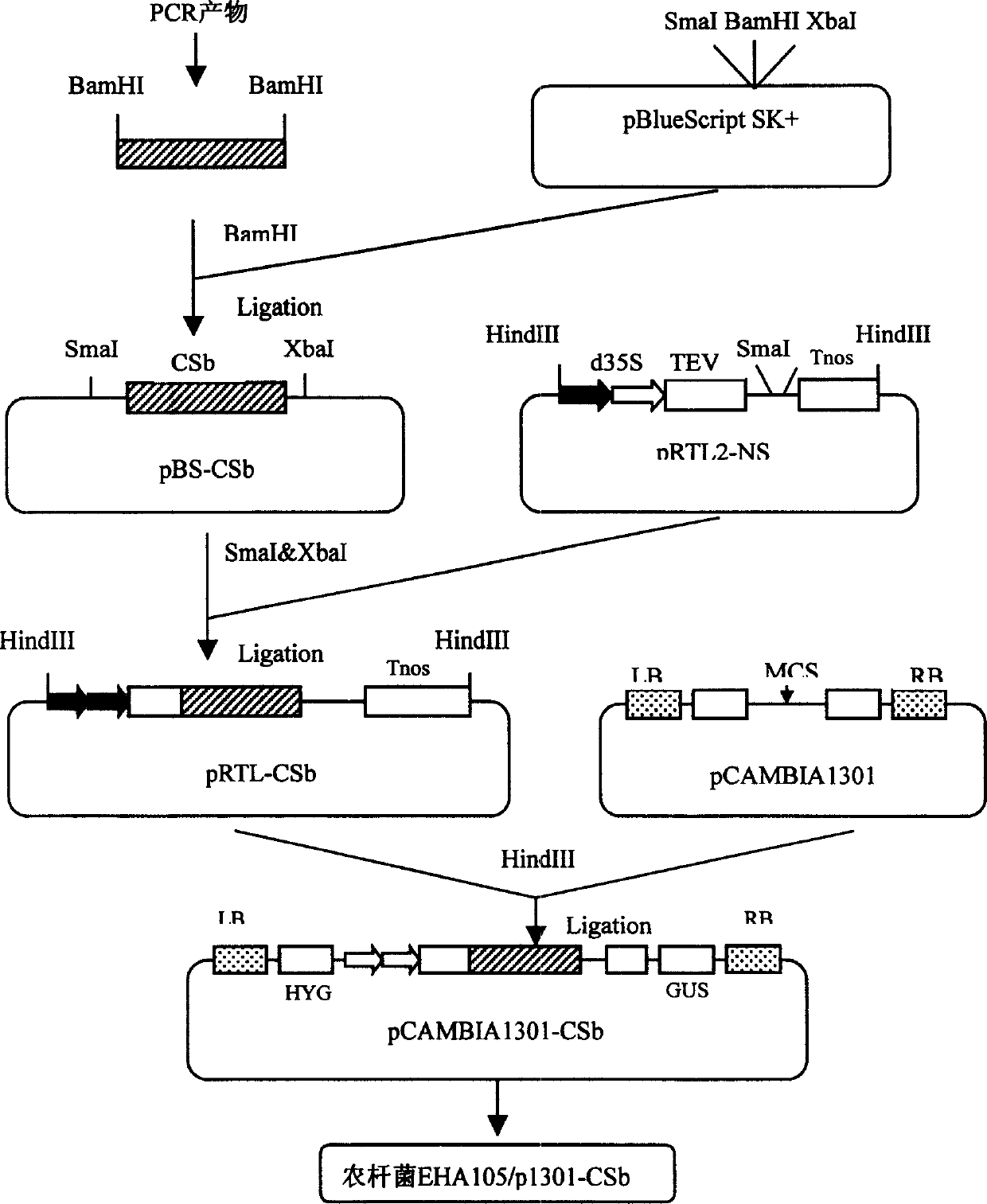Citric acid synthesized enzyme gene and use thereof
A citrate synthase and gene technology, which can be used in applications, plant genetic improvement, and introduction of foreign genetic material using vectors, and can solve problems such as unpublished citrate synthase gene sequences.
- Summary
- Abstract
- Description
- Claims
- Application Information
AI Technical Summary
Problems solved by technology
Method used
Image
Examples
Embodiment 1
[0033] Example 1: Isolation of citrate synthase gene coding sequence
[0034] a, according to the Pseudomonas reported by Lynda et al. (Pseudomonas aeruginosa) citrate synthase gene coding sequence design primer P1 (5'-GC GGA TCC ATG GCT GAC AAA AAA GCG-3') and P2(5'CG GGA TCC TCA GCC GCG ATCCTT GAG-3'). A BamHI endonuclease recognition site is designed in the primers to facilitate gene modification;
[0035] B, use the PCR method to amplify the citrate synthase gene coding sequence from the genome of Pseudomonas bacterium (numbering is Pa 1.1129, purchased from Institute of Microbiology, Chinese Academy of Sciences);
[0036] c. Digested with BamHI, connected to the vector pBluescript-SK, named pBS-CS;
[0037] c. Use a KpnI restriction site at the 5' end of the coding sequence to select pBS-CS for forward insertion (the SmaI and XbaI restriction sites on the multi-cloning site are respectively located at the 5' end of the coding sequence during forward insertion) and ...
Embodiment 2
[0038] Example 2: Sequencing analysis and construction of plant overexpression gene vector
[0039] 1. Sequencing analysis
[0040] The CS gene coding sequence fragment of the Pseudomonas isolated by PCR amplification was sequenced, and the result is shown in SEQ NO:1. Blast analysis found that the coding sequence of the newly isolated CS gene was somewhat different from the sequence reported by Linda, involving 11 bases and one amino acid difference. The results are shown in Figure 2 and Figure 3.
[0041] 2. Construction of recombinant gene and plant overexpression vector
[0042] a. Carry out double digestion of plasmid pBS-CS1 with SmaI and XbaI enzymes, and recover the digestion products;
[0043] b. At the same time, the vector pRTL2-NS containing double 35S promoters and 3' end regulatory sequences was double-enzymatically digested with SmaI and XbaI enzymes, and the digested products were recovered;
[0044] c. Use T for the two digested products 4 -DNA ligase was ...
Embodiment 3
[0049] Example 3: Genetic Transformation Mediated by Agrobacterium Ti Plasmid
[0050] a. The mature embryos of the rice variety "Hejiang 19" were placed in N 6 The callus was induced on the culture medium, and the N 6 The culture medium was subcultured for 20 days;
[0051] b. Insert vigorously growing, bright yellow granular calli into 1 / 2 N containing 1% glucose and 100 μM acetosyringone 6 Pre-cultivate on medium for 4-5 days;
[0052] c. Soak the pre-cultured callus with the newly activated Agrobacterium in the logarithmic growth phase. After 30 minutes, blot the callus with sterilized absorbent paper and insert it into the co-culture medium , cultivated at 19-21°C for 2-3 days;
[0053] d. Fully wash the callus after co-cultivation with sterile water, blot it dry, insert it on the selection medium containing 250mg / L carbenicillin and 50mg / L hygromycin for resistance selection, and subculture once every two weeks ;
[0054] E, transfer the newly grown resistant callu...
PUM
 Login to View More
Login to View More Abstract
Description
Claims
Application Information
 Login to View More
Login to View More - R&D
- Intellectual Property
- Life Sciences
- Materials
- Tech Scout
- Unparalleled Data Quality
- Higher Quality Content
- 60% Fewer Hallucinations
Browse by: Latest US Patents, China's latest patents, Technical Efficacy Thesaurus, Application Domain, Technology Topic, Popular Technical Reports.
© 2025 PatSnap. All rights reserved.Legal|Privacy policy|Modern Slavery Act Transparency Statement|Sitemap|About US| Contact US: help@patsnap.com



